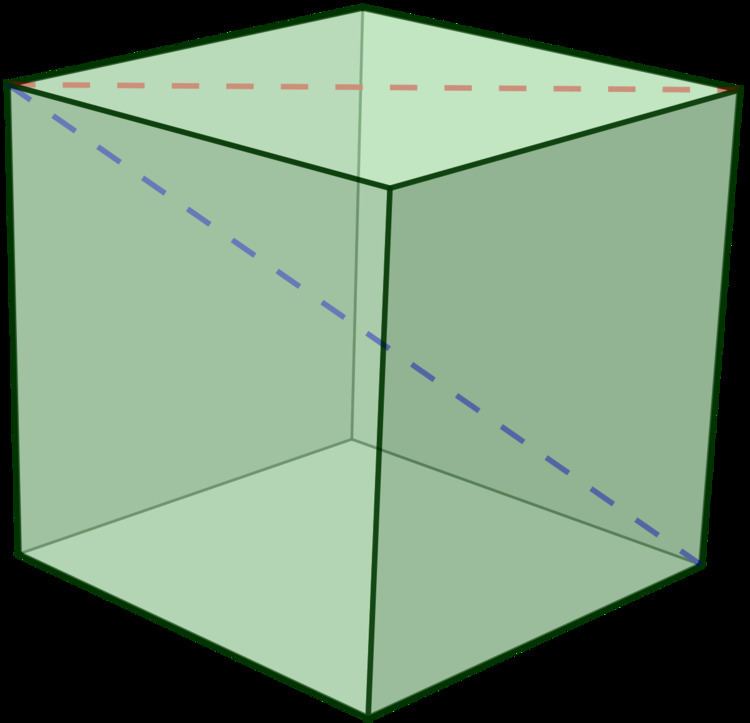 | ||
In geometry a space diagonal (also interior diagonal, body diagonal or triagonal) of a polyhedron is a line connecting two vertices that are not on the same face. Space diagonals contrast with face diagonals, which connect vertices on the same face (but not on the same edge) as each other.
Contents
Axial diagonal
An axial diagonal is a space diagonal that passes through the center of a polyhedron.
For example, in a cube with edge length a, all four space diagonals are axial diagonals, of common length
A regular octahedron has 3 axial diagonals, of length
A regular icosahedron has 6 axial diagonals of length
Space diagonals of magic cubes
For the cube to be considered magic, these four lines must sum correctly.
The word triagonal is derived from the fact that as a variable point travels down the line, three coordinates change. The equivalent in a square is diagonal, because two coordinates change. In a tesseract it is quadragonal because 4 coordinates change, etc.
r-agonals
This section applies particularly to magic hypercubes.
The magic hypercube community has started to recognize an abbreviated expression for these space diagonals. By using r as a variable to describe the various agonals, a concise notation is possible.
If r =
... By extension, if r =
Because the prefix pan indicates all, we can concisely state the characteristics or a magic hypercube.
For example;
The length of an r-agonal of a hypercube with side length a is
